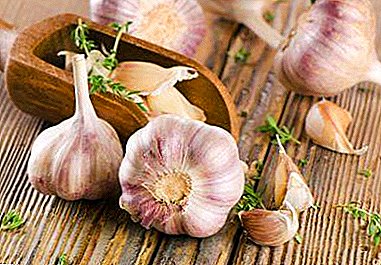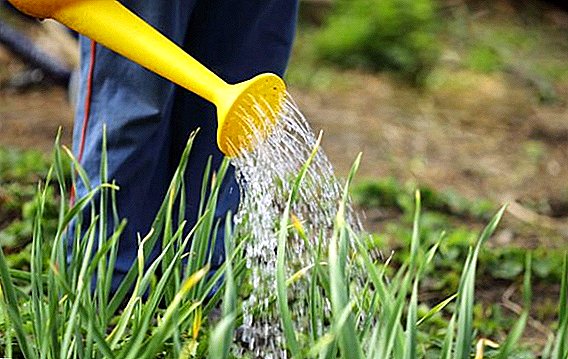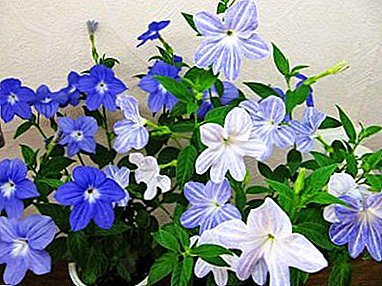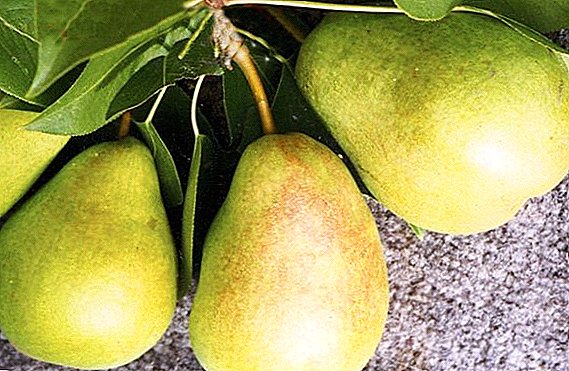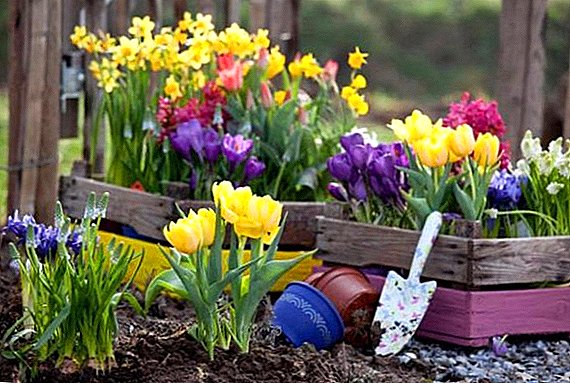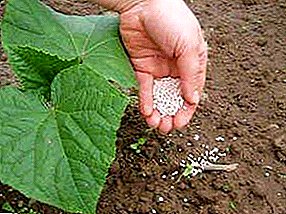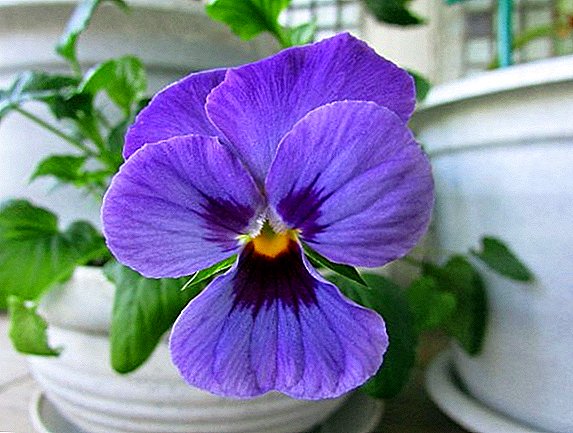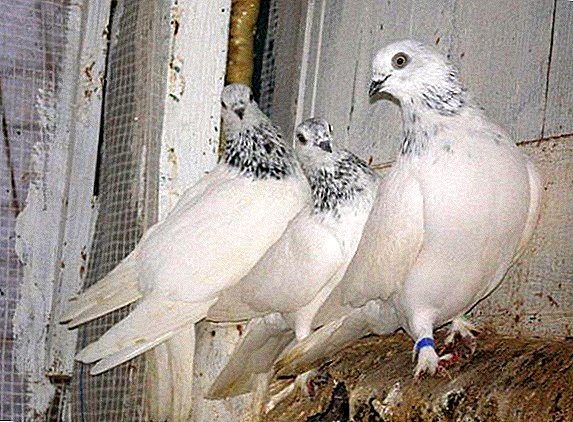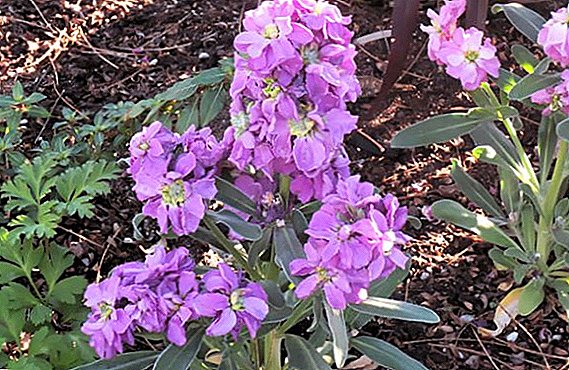 Mattiola gray-haired, or Levkoy, was once a very popular annual herb. The leftist decorated the gardens of ancient Greece., where for its beautiful aroma was called "white violet" (Greek: λευκό - white, ϊον - violet). The plant was cultivated in Holland in 1568, and since then it has decorated the hedges of royal gardens, terraces and front gardens, festive halls and temples of almost all European countries.
Mattiola gray-haired, or Levkoy, was once a very popular annual herb. The leftist decorated the gardens of ancient Greece., where for its beautiful aroma was called "white violet" (Greek: λευκό - white, ϊον - violet). The plant was cultivated in Holland in 1568, and since then it has decorated the hedges of royal gardens, terraces and front gardens, festive halls and temples of almost all European countries.
Selection of mattiola gray: flowering time, height of variety and time of development
In nature, wild-growing Mattiola can be found in the Mediterranean, Asia Minor, the Caucasus and the Canary Islands. In Europe and the CIS countries, only cultivated flower species grow. At the moment, there are about 600 species of mattiola, which differ in the shape, height of the bush, the color of flowers and the timing of flowering. Only crops with terry, seedless, flowers have a decorative value. And from the seeds grow species with simple flowers. Often, 70-90% of flowers with double buds develop in crops, and the rest are simple. Flower growers achieve this by selecting testes, taking into account morphological features.
By the time of development, such forms are distinguished:
- Winter (var. Hibema) - biennial culture, used for distillation. If you sow it in June-July, then the color will give next spring.
- Autumn (var. Autumnalis) - when sown in March-April, it blooms by the end of summer - the beginning of autumn, and gives seeds by next year. Does not overwinter in the midland soil and is used for forcing.
- Summer (var. Annua) - sown in open ground in late April - early May. To increase the flowering period, it is better to grow seedlings, due to the fact that 70-100 days pass from sowing to the beginning of flowering. During this period, before the onset of autumn cold weather, the plant should have time to bloom.
- low - 15-30 cm long;
- medium - from 30 to 50 cm;
- high - from 50 to 70 cm.
- Terry (Quedlinburg). Varieties of this group with double flowers have a pale green color in the cotyledonous state. Levka with ordinary flowers, as a rule, dark green.
Flowers with terry inflorescences also include peonies, tree hydrangea, Kalanchoe Kalandiva, annual asters, heather.According to the flowering time and habit, the varieties of this group are divided into the following subgroups:
- Early tall bushy - 45-65 cm tall, branchy, sprawling bushes, broad-pyramidal shape. Leaves obovate or lanceolate, rather large, graphite green in color, with a smooth or wavy edge. The inflorescences are large, from 13 to 20 cm in length, with bright flowers up to 5 cm in diameter. This species blooms from June for two months.
- Early low bushy - height from 25 to 40 cm, compact or semi-sprawling, abundant branchy, spherical bushes. The bluish-green leaves are oval or lanceolate. Inflorescence length from 12 to 20 cm with double flowers up to 4.5 cm in diameter. Flowering begins in June and blooms for 2 months.

- Late tall bushy - strongly branched, wide-pyramidal bushes, up to 60 cm high. The narrow elongated leaves of green color have obovate, lanceolate or blunt shape, with whole or unevenly toothed edges. Inflorescences up to 50 cm long, with dense flowers up to 5 cm in diameter. Late cultivar blooming from July for 50 days.
- Six-shaped - pyramidal single-stem or weakly branchy bushes, up to 80 cm high. Narrow leaves of a blunt, oblong or obovate form. Loose inflorescences up to 60 cm long with very large densely-sized flowers up to 6 cm in diameter. Central inflorescence, as a rule, above lateral. The varieties are very early, blooming from June, from 1 to 2 months, and are recommended for cutting.
- Spreading - divided into two subgroups:

- Remontatory (Dresden) - strongly branched bushes reaching 60 cm in height. Inflorescences are friable, with large flowers with a diameter of up to 5 cm. The bluish-green leaves have an elongated-oval shape, with solid edges or notched. Begin to bloom in June-July and until November.
- Large-flowered late (Bismarck) - powerful branchy bushes up to 70 cm tall. Loose inflorescences with very large, reaching 5.5 cm in diameter, dense-double flowers. Large whole leaves have an elongated oval shape. Late varieties, blooming from July to frost.
- Pyramidal - according to the height of the plants are divided into subgroups:

- Dwarf reach only 25 cm in height, pyramidal, branched. Compact inflorescences have rather large flowers with a diameter of up to 4.5 cm. Large, entire, oval-elongated leaves are painted in dark green, gray-green, glossy color. Very early varieties, bloom from June to 50 days.
- Semi-high - strongly to branchy, pyramidal bushes, up to 45 cm tall. Compact inflorescences up to 18 cm long with flowers with a diameter up to 4.5 cm. The leaves are narrow, elongated and oval in shape. Mid-early varieties, flowering from June for 2 months.
- Giant large-flowered - half-tall bushes up to 50 cm, tall up to 80 cm, have a pyramidal shape. Large double flowers reach 5 cm in diameter. Elongated-oval, weakly muscular leaves with a round or blunt tip. Middle-early varieties that bloom profusely from June to September.
- Bombed gigantic - broad-leafy leafy bush, up to 60 cm tall. Large gray-green leaves have an elongated rhombic or notched shape. The main inflorescence is rather large, up to 25 cm long, loose, begins flowering earlier than the lateral ones. Gustomarovye flowers reach 4.5 cm in diameter. Late varieties, blooming from July to 50 days. Grown for flower beds and for cutting.

- Bouquet (Victoria) - branchy, fairly compact plants, up to 35 cm tall. Large bluish-green leaves have an elongated oval shape and a solid edge. The main inflorescences are located practically on the same level with the lateral ones, densely or medium-densely. Large double flowers with a diameter of up to 3.5 cm. Medium early varieties that begin to bloom in June and over 75 days. The advantage of this variety of levkoev - growing for cutting, pots, rabatok and flower beds.

- Large-flowered giant tree - branching in the upper part of the plant, reaching 90 cm in height. Large double flowers up to 6 cm in diameter, collected in compact, rather large inflorescences of bright various colors. Large leaves have an elongated, oval shape and a wavy edge. Bloom from June to two months. Grown for cutting, rabatok and group plantings.
- Korotkovitvistye (Erfurt) - strongly branching, leafy, compact bushes up to 40 cm tall, have a wide pyramidal shape. High intake side shoots distinguishes them from other groups. Large bluish-green leaves have an elongated oval shape and solid edges. Convex flowers reach 4 cm in diameter. The central inflorescence is much higher than the lateral. It blooms from June to August. Recommended for cutting, flower beds and as a pot culture.

- Single-stemmed (Excelsior) - the stem reaches 80 cm tall, showered with compact inflorescences with large dense flowers up to 6 cm in diameter. The large, diamond-shaped leaves have a curled or wavy edge. Blossom from June to July and are used for cutting.
Did you know? The plant was named Leuky, the Greeks, but in Latin it is called "mattiola." Scottish botanist of the first half of the XIX century, Robert Brown called the flower in honor of the Italian doctor and botanist XVI century Pietro Andrea Gregorio Mattioli and timed this event to the 200th anniversary of the publication of the book Mattioli.
Where is the best place to plant a plant
Landing Mattiola has its own characteristics. Early varieties can be planted immediately in the open land, but later ones must first be grown as seedlings, and then planted in the ground.
Levkoy planting is easy, you only need to follow certain rules.
Climatic conditions for growing
Levkos prefer sunny areas without wind and drafts, but the shadow during the midday sun also does not harm them.
Shading can affect flowering if the plant is hidden from the sun most of the day. Mattiola prefers a significant humidity of air and soil, while not tolerate stagnant water. A prolonged drought also adversely affects the growth and development of culture.
Reducing the temperature to -3 ° C is not terrible for hardened seedlings, unless the frost lasts for several days in a row.
Soil requirements
A year before sowing the seeds, it is necessary to start preparing the soil, since the microbes applied with the fertilizers will die under the influence of low temperatures.  The following actions should be taken:
The following actions should be taken:
- dig up the soil to a depth of 30-40 cm and add humus to it (at the rate of 7 kg of humus per 1 sq. m plot);
- make a neutral floral substrate (at the rate of 3 tablespoons per 1 sq. m plot).
Did you know? Mattiolu recommend planting with potatoes - It is capable of scaring the Colorado beetles and other harmful insects.To achieve maximum ornamental colors, it is necessary to comply with the requirements for the soil:
- summer levkoy not planted in the soil with organic fertilizers; do not fertilize mattioli directly during planting;
- it is impossible to plant a plant in the soil in which other representatives of the cruciferous family have been grown for several years before;
- the soil should be fertile, sod-sandy, light loamy, rich in organic matter, bloom in sour soil will be scarce;
- Mattiola does not tolerate water stagnation, therefore on lowland land sites it is recommended to raise the ridges for culture.

Sowing mattiola
The seeds of the left-wing crops are sown in two ways:
- in open ground;
- for growing seedlings.
- you first need to loosen the previously prepared soil;
- form grooves with a depth of about 0.5 cm and slightly moisten them;
- add sand to the seeds in the ratio of 1:10 and evenly distribute along the grooves;
- gently sprinkle with earth, without tamping it, and again slightly moisten.
Learn more about how to grow acacia, Turkish carnation, geyher, castor oil, and plumeria from seeds.Shoots can usually be seen in 1.5-2 weeks after the spring planting of seeds, and when planted in the fall - the next spring.
In order to grow a fragrant blooming mattiol in early summer, you need to use a seedling method of growing plants. Sowing at the same time is made in the period of the end of March - beginning of April.  Land and containers for seedlings must be prepared two days before planting, having carried out the following activities:
Land and containers for seedlings must be prepared two days before planting, having carried out the following activities:
- wash the boxes with water with potassium permanganate and dry them thoroughly;
- lay drainage in the form of small pebbles on the bottom of the container;
- to fill the containers with earth, in the composition of which sand and sod soil in a ratio of 1: 3;
- Dampen the ground with water with a small amount of potassium permanganate.
After carrying out all the preparatory work of sowing the seeds as follows:
- form grooves in the ground at a distance of 4 cm from each other;
- tweezers spread out the seeds, leaving between them a space of 3 cm;
- sprinkle them a little and moisten;
- Cover with glass and store in a warm place protected from light (20-22 ° C).
 After 5-8 days after sowing, the seedling containers should be moved to diffused light and the temperature should be reduced to 12-14 ° C. Such a kind of hardening will prevent the delay in the formation of buds and flowering.
After 5-8 days after sowing, the seedling containers should be moved to diffused light and the temperature should be reduced to 12-14 ° C. Such a kind of hardening will prevent the delay in the formation of buds and flowering.Important! If the seedlings are not subjected to a decrease in temperature, but leave it to grow at 25 ° C, then the start of flowering of mattioli will shift by 10-30 days, depending on the variety.
After the formation of 2-3 leaves (no later than two weeks after the sprout emerges from the ground), seedlings should be transplanted into a separate container in order to reduce the likelihood of damage to the root system during transplantation into the soil.
Prepared small pots must be filled with a mixture of:
- sod land (part 1);
- leaf earth (2 parts);
- sand (1 part).
 Toward the end of May, seedlings can be planted in a permanent place, at a distance of 15-30 cm from each other. The first few days after disembarking will have young leftovers, especially if the weather is very hot. So the seedlings will be taken faster in a new place.
Toward the end of May, seedlings can be planted in a permanent place, at a distance of 15-30 cm from each other. The first few days after disembarking will have young leftovers, especially if the weather is very hot. So the seedlings will be taken faster in a new place.Important! Do not land Levkoy too tightly to each other. Due to the fact that many varieties grow strongly, rhizomes and stems can peat. This contributes to the formation of fungal diseases that can destroy the entire flowerbed.
Growing and caring for a flower
Although Levkoy is quite unpretentious, nevertheless, after planting, he needs proper care so that the plant in the open field feels comfortable and delights with its flowering and fragrance.
Watering and feeding
Watering is a very important component of plant care. Mattiola does not tolerate excess moisture. Therefore, it is abundantly watered only during a prolonged drought, with insufficient amount of natural precipitation. Regular watering should be moderate so that it does not lead to stagnant moisture.  During prolonged precipitation, it is necessary to prevent waterlogging by loosening the soil to accelerate its moisture permeability.
During prolonged precipitation, it is necessary to prevent waterlogging by loosening the soil to accelerate its moisture permeability.
In the dry season, the first sign of a lack of moisture in the culture will be folded leaves. Avoid this will help watering directly under the root of the plant. It is better to humidify in the morning, before the appearance of intense heat.
The long-flowering summer plant is good for feeding. However, you should not feed it with organic fertilizers, even with insufficiently matured compost. It should be used exclusively mineral fertilizers, adding them to the irrigation water.
During the spring-summer period, up to 4 supplements of the nutrient soil and up to 6 supplements of the lean soil are usually carried out.
Did you know? In the Middle Ages, mattiola was considered one of the best ornamental plants, along with roses and lilies.Since it is not necessary to fertilize while planting mattiol, it is imperative to fertilize the plants during the budding and blooming of the first flowers. Flowering gulfs are better to feed with potash-phosphate fertilizers.

Soil care and weed removal
In order to give Mattiola its owners beautiful, bright, fragrant flowers, after planting in the ground, in addition to proper watering and fertilizer, the plant needs care for the soil and getting rid of weeds.
To get rid of weeds in the garden and garden use such drugs as "Lontrel-300", "Ground", "Titus", "Agrokiller", "Roundup".It is important to timely weed weeds that absorb the nutrients from the ground that are necessary for the crop. It is advisable to do this after watering so that the soil is more pliable and the roots of weeds easily leave the ground. Loosening the soil in the process of weeding will help to enrich it with oxygen, slightly soften and create optimal moisture permeability. In the process of loosening, you should try not to hurt the stems and roots of the mattiola.
 A well-groomed view of a flower bed with a levoroy will add removal of faded inflorescences. The plant will receive power for subsequent flowering. Terry flowers, which do not give seeds, should be cut off completely after flowering.
A well-groomed view of a flower bed with a levoroy will add removal of faded inflorescences. The plant will receive power for subsequent flowering. Terry flowers, which do not give seeds, should be cut off completely after flowering.Important! Place for planting mattioli desirable change every year. After 3 years, you can again land levkoy in the same place.
Main breeding methods
Reproduction Mattiola occurs in two ways:
- seminal;
- rassadny.
Seeds are located in small pods, similar to the stalks. Dried pods tear and shelled. You can collect the seeds in another way: put a small cloth bag blown by the wind on the pods and wait for the seeds to crumble in it.
Seeds can be stored until the next season, to grow seedlings or planted in the ground.  By growing seedlings from seed, you can propagate the plant with a transplant. It should be remembered that this method of reproduction is less effective, since the culture can easily be damaged during transplantation, it is difficult to settle down and die.
By growing seedlings from seed, you can propagate the plant with a transplant. It should be remembered that this method of reproduction is less effective, since the culture can easily be damaged during transplantation, it is difficult to settle down and die.
Diseases and pests of the flower
Culture flowers should be periodically inspected for pests and diseases:
- Кила крестоцветная (капустная) - поражает левкой при переизбытке влаги в почве и воздухе, по этой причине культуру нельзя сажать в землю, в которой прежде росли растения семейства крестоцветных. Грибок может сохраняться в почве более 15 лет. The affected plants most often cannot be treated and must be removed, and then the soil is treated with antifungal agents (dolomite powder, lime, a solution of the fungicide "Fundazole", a solution of "Cumulus" or colloidal sulfur). The disease affects the root system, so it is difficult to immediately identify it. Keel promotes the formation of deforming growths on the stem and roots, while the leaves of the plant wither and turn yellow.
- Cruciferous flea - affect Mattiola with drought and insufficient moisture. To determine the appearance of pests can be the presence of leaflets on the sheets. It is possible to get rid of insects by sprinkling leaves and soil with wood ash.
- Black leg - a disease that affects the bushes with waterlogging or improper care. Manifested by the darkening of the stem and leaves, rotting and death of the culture. It is impossible to cure diseased plants from the disease, they must be removed to prevent the spread of the fungus. To prevent the disease, you can treat the site with “Khom”, “Fitosporin” or “Baktofit” before planting levkoev.
 Mattiola is an amazing plant with delicate beauty and variety of species. Caring for them does not require much effort and cost, and the flower will reward flower growers with magnificent flowering and fragrance.
Mattiola is an amazing plant with delicate beauty and variety of species. Caring for them does not require much effort and cost, and the flower will reward flower growers with magnificent flowering and fragrance.

